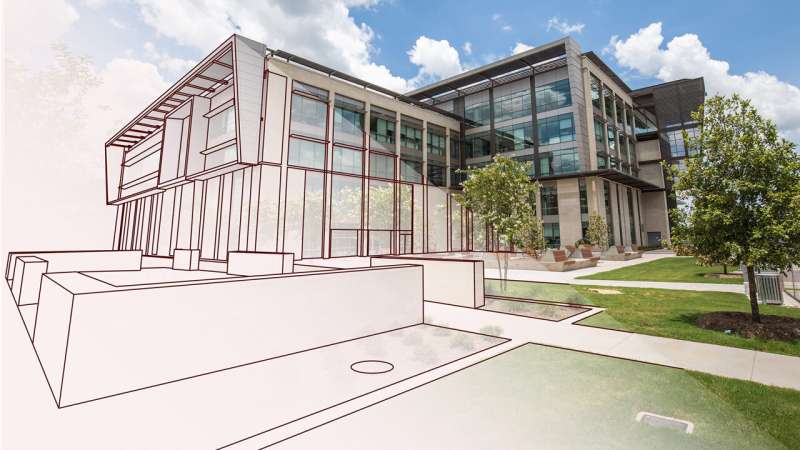
Texas A&M University researchers are working to create a campus “digital twin” that could lower commute times, enable students to plan efficient schedules, and help course schedulers to maximize classroom use.
If implemented, this collaborative research project, which includes researchers from the College of Architecture and the Center for Geospatial Sciences, Applications and Technology, would allow researchers and university officials to collaborate on optimizing class times and locations.
The work appears in Frontiers of Urban and Rural Planning.
Led by Dr. Xinyue Ye—professor of landscape architecture and urban planning and affiliated faculty member in the Department of Computer Science and Engineering and the Department of Multidisciplinary Engineering—researchers have used existing datasets and a digital workflow to create a 3D model of Texas A&M.
A 3D model of campus has the potential to create much smoother campus operations by taking into account factors that have not been considered in the past. For example, two buildings may only be a 5-minute walk from each other, but if classes are held on the top floor, the time it takes to get up and down the stairs should be considered part of a student’s commute time.
“Our model takes into consideration the complexity of buildings and the distance between classrooms, which was not considered by previous class scheduling software,” said Ye, who also serves as the director of the Texas A&M Center for Geospatial Sciences, Applications and Technology, and the founding director of Urban AI Lab at the Texas A&M Institute of Data Science.
Applications
By creating a digital twin of Texas A&M University, researchers can estimate the usage in a given location at a given time. This has a variety of applications, including maximizing class sizes, lowering commute times by making campus transportation more efficient, and even providing first responders with estimates of how many people are in a certain location in the event of an emergency.
“The ability to approximate student mobility using a digital twin will have positive impacts on several aspects of campus life, from shorter commutes to full classes, providing students with the best deal for their tuition,” said Ye.
In addition to creating smoother campus operations, the researchers say using a digital twin to optimize class scheduling may encourage students to take interdisciplinary coursework. Due to the nature of scheduling, students may shy away from taking an elective outside their major if the timing or location conflicts with their core classes.
The ability to maximize interdisciplinary coursework can provide students with a more well-rounded education. While this method has not been utilized for the fall 2024 class schedule, there is hope that it will be used in semesters to come.
Other Texas A&M faculty collaborators on the project include Dr. Galen Newman, professor and head of the Department of Landscape Architecture and Urban Planning; Dr. Patrick Suermann, professor and interim dean of the College of Architecture; and Dr. Shannon Van Zandt, professor of the Department of Landscape Architecture and Urban Planning and Coordinator of the Urban and Regional Sciences Ph.D. program.
More information:
Xinyue Ye et al, Developing campus digital twin using interactive visual analytics approach, Frontiers of Urban and Rural Planning (2024). DOI: 10.1007/s44243-024-00033-2
Provided by
Texas A&M University
Citation:
Researchers work to create 3D digital twin of campus to optimize class times and locations (2024, August 20)
retrieved 20 August 2024
from https://phys.org/news/2024-08-3d-digital-twin-campus-optimize.html
This document is subject to copyright. Apart from any fair dealing for the purpose of private study or research, no
part may be reproduced without the written permission. The content is provided for information purposes only.
